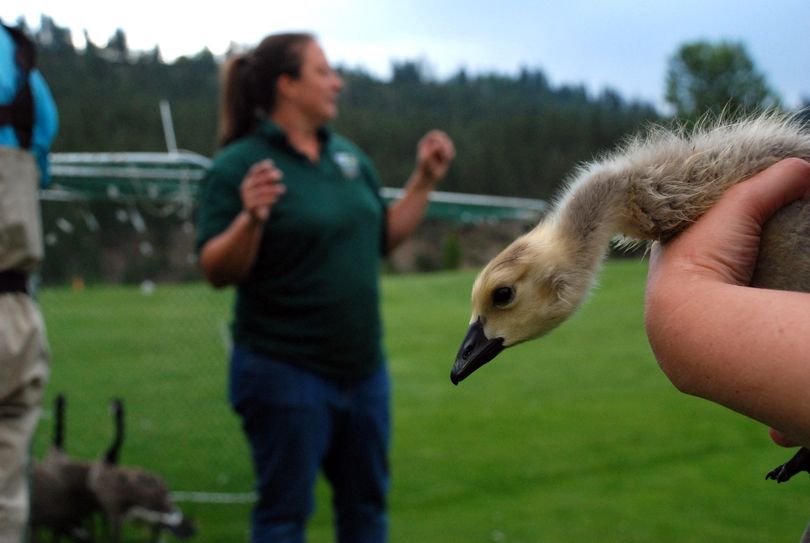Researchers round up geese around Spokane

WILDLIFE RESEARCH– Biologists and a team of volunteers are herding Canada geese into pens and clamping leg bands on about 1,000 young birds in Eastern Washington for a Washington Department of Fish and Wildlife study of goose population trends.
The teams were herding geese at Qualchan Golf Course this morning starting at 4:30 a.m.
They planned to trap and release geese later in the day at Gonzaga University and Liberty Lake.
In its fourth year, the study seeks to understand nesting declines, hunter harvest patterns and the birds’ use of urban and rural habitat, said Mikal Moore, state waterfowl specialist.
Since the study began, biologists have banded 2,523 geese from eight areas in Eastern Washington, Moore said. Of that number, 406 were observed with neck collars and 359 marked geese were taken by hunters.
The roundup is timed during the molt. Since the adults can't fly, the volunteers can herd the families into pens. After the goslings are inspected and banded, they're released.
Read on for details about the banding, the study and what birdwatchers and hunters can do to help the research.
“Goose nesting counts have been declining for over a decade in most rural survey areas, while complaints about urban geese have been rising,” Moore said. “This study will help us determine if urban birds are year-round residents or migratory, and to what extent they are hunted.”
Moore said urban goose numbers can rise dramatically when they do not migrate, or are not exposed to predators, hunting or other factors that normally limit populations. Geese may become habituated to urban areas that are closed to hunting or when people feed them, she said.
The marking project runs June 13 -June 21, when geese are molting and thus unable to fly. WDFW crews will capture, band, and collar the geese, using boats and portable trapping panels at urban and rural locations in or near Wenatchee, Moses Lake, Yakima, the Tri-Cities, Spokane, and Sprague Lake.
The age and sex of each captured goose will be recorded, and all will be marked with numbered aluminum leg bands. Some adult geese also will receive white neck collars with number and letter codes.
Waterfowl hunters should report leg band information if they harvest a marked goose.
Anyone who spots a goose with a white neck collar should report band or collar codes, along with locations and dates, to the U.S. Geological Survey Bird Banding Laboratory at 1-800-327-BAND or online.
To date, biologists have banded 2,523 geese from eight distinct areas in eastern Washington, Moore said. Of that number, 406 were observed with neck collars and 359 marked geese were taken by hunters.
“Several of the band returns came from as far away as northern Alberta and Saskatchewan, although most were local,” Moore said.
